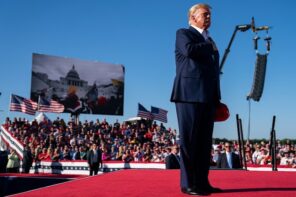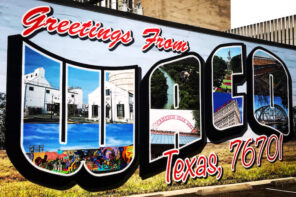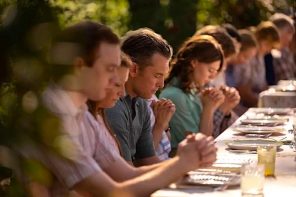Over at The Daily Dish, Andrew Sullivan asks “Has There Been a Great 9/11 Work of Art?” I don’t know if I’m qualified to answer that question. However, I do think it’s too narrow a view of art and what 9/11 means to us. If art is meant to reflect what we hold dear as a society, and what represents us, I do not think we will ever get a great 9/11 work of art. The day means too much to each of us, and in many different ways.
I think the better question is how has 9/11 changed the art we are interested in, and the subsequent question of what that says about us. There are works of literature that I do not think could have been written without the events of 9/11, and some that would not have gotten the attention they did.
One of the first to come to mind is Mohsin Hamid’s The Reluctant Fundamentalist. It’s a story of a young man of Pakistani descent, living in America, but telling his story in Lahore to a man we presume to be a US intelligence officer. It picks up on themes of bi-cultural negotiation, religious identification and how much of that identification is ascribed to Muslims rather than Muslims choosing it for themselves, and the domestic politics on the war on terror. Changiz, the protagonist, is not easy to like at points. There are times—like when he admits to smiling at 9/11 as we watched the events from overseas—that I found him loathsome.
This book does not create sympathy for him, but it does create a kind of empathy. His life disintegrates: his lover dies, he begins to hate his family, takes on a religion he’s not sure he wants, and his professional future is uncertain. I do not think this could have been written close to 2001, but in 2007, after looming failures in Iraq and Afghanistan, a sense of distance, and desire to try to make sense of the changing world, Hamid’s book provided a window we were finally getting ready to look through.
While Hamid’s work was very much based on the world of foreign politics and policy, with implications in the domestic space, other authors choose to focus on the American experience. After 9/11 we see a burgeoning of the “ex-Muslim” industry.
These are people who claim to have been Muslim at one point, or claim to be Muslim now, who reiterate tired stereotypes from the Rudy Valentino era of the savage, barbarous Arab/Muslim. However, there are also authors like G. Willow Wilson. She is known in the comics world for her graphic novel Cairo, her series Air, and for penning several issues of Superman. Unlike Naif al-Mutawa’s wonderful series The 99, her characters were set in fantastical worlds where their religious identification was not ambiguous, but were also not necessarily essential to the story. In other words, her characters were people who happened to be Muslim, normalizing Muslim presence in American popular culture.
I believe the memoir she wrote about her conversion, The Butterfly Mosque, is a story that truly needs to be heard. Where other people are profiting from why they left Islam, Wilson’s book is one of the few that clearly articulates the beauty one finds in the faith. She is a natural story teller, and she captures the emotional, spiritual, and even physical satisfaction one gets from being part of the faith. At some level, the idea that a quarter of the world’s population would believe in something that brought them no joy, no satisfaction, or no happiness does not make sense. We were ready to hear not only why someone was a Muslim, but why an adult woman would choose a faith that was supposedly so aligned against her interests.
Like Wilson and al-Mutawa, I have previously spoken about Wajahat Ali’s art as having an important impact on American popular culture. His play, The Domestic Crusaders, is about a multi-generational household. The family happens to be from Pakistan and they happen to be Muslim. As I write in an earlier review,
“their stories can belong to anyone. That is the power of Domestic Crusaders. It is billed as an immigrant, Pakistani, Muslim experience, but it is the story of any community that is trying to preserve a unique identity against the forces of a homogenizing popular culture.”
The children fight with their parents about what clothes to wear, how much money they spend, who their friends are, and what they are going to do with their lives. The grandfather tries to play mediator, but also has experiences that he cannot share with the younger generations; he is from a different time. DC has done so well, it has been performed at the Kennedy Center and NY’s Nuyorican Cafe on the 8th Anniversary of 9/11. John Jay College is bringing back for a performance on the 10th Anniversary of 9/11. Yet the play has nothing to do with 9/11—or perhaps it’s all about the normalcy of a post-9/11 world.
Finally, while I have mentioned several Muslim authors talking about the American Muslim experience, I would be remiss in not mentioning works like Bryonn Bain’s The Prophet Returns. His book is a reworking of Khalil Gibran’s The Prophet. Many of us recall the Khalil Gibran Academy controversy, where a school honoring a Christian author was said to be a hotbed of Islamic radicalism. Bain takes many of the themes that Gibran developed of mutual co-existence and understanding and updates them with a hip-hop sensibility. Since he is from NY himself, Bain’s work, like Gibran’s, takes on Islamicate air, pulling on the Muslim traditions present in hip-hop and in NY. The success of his work derives from his ability to convey a lived experience of daily interaction, where conflict is not contrived.
Although I focus on literature as the primary art form in this piece, there are numerous other examples we can draw on. Here at RD we have covered Michael Muhammed Knight’s works and the music of The Kominas. Musicians like Steve Earle (“John Walker’s Blues”), Bruce Springsteen (“Worlds Apart”), and Jordi Savall (“Jerusalem”), are all also attempting to tell the stories of what the world means to us now. In many respects, these works are not only reflective of society, but also aspirational, of what our world could be.
I think Sullivan asks an interesting question, but it’s not the best. Art can capture a moment, but it’s also about defining who we are.




